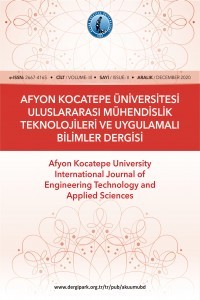Müze Olarak İşlev Kazandırılan Tarihi Bir Yapı; Bursa Umurbey Hamamı
Bursa'nın en önemli İpek üretim merkezlerinden biri olan ve şimdiki İpekçi bölgesinde bulunan Umurbey Hamamı, 1430 yılında inşa edilmiştir. Hamam mimari özelliklerini yansıtması nedeniyle önemlidir. Türk Hamamları iki gruba ayrılır: kadın ve erkeğin ayrı ayrı yararlandığı “Tek Hamamlar” veya erkekler ve kadınlar için birbirine bitişik ayrı hamamların birlikte yapıldığı “Çift Hamamlar”. Umurbey Hamamı "Tek" Hamamdır Toplumlarda görülen değişim, halkın ihtiyaçlarını değiştirmenin yanı sıra, ait oldukları zamana göre şekillenen yerler nedeniyle yapıları değiştirir. İşlevlerini geçmişten günümüze taşıyamayan yapılara, yaşamlarına devam etmek için ikincil bir işlev sunulur. Umurbey Hamamı'na müze işlevi verildi. Bu çalışmada, Umurbey Hamamı'nın geçmişten günlük olarak değiştirilmesi, rölöve çizimleri, rölöve raporları, restorasyon projeleri, restorasyon raporları ve restorasyon öncesi ve sonrası fotoğrafları dahil edilmiştir.
A Historical Building Functioned As A Museum; Bursa Umurbey Bath
The Umurbey Turkish Bath, located in the present Sericulture district, one of the most important Silk production centers of Bursa in the past, was built in 1430. It is important because the bath reflects its architectural characteristics. The Turkish Baths are divided into two groups: "Single Baths" where men and women benefit separately, or "Double Baths", where separate hammams adjacent to each other for men and women are constructed together. The Umurbey Hammam is the "Single" Hammam. The change seen in the societies changes the needs of the people as well as changing the structures because of the places that are shaped by the time they belong.Structures that can't carry their function from past to today are provided with a secondary function to continue their lives.The Umurbey Bath was given a function as a museum. In this study, the daily change of the Umurbey Baths from the past, survey drawings, survey reports, restoration projects, restoration reports and photographs before and after the restoration were included.
___
- Complexity of Statutory Requirements : Case Study of Refurbishment Projects in Malaysia
